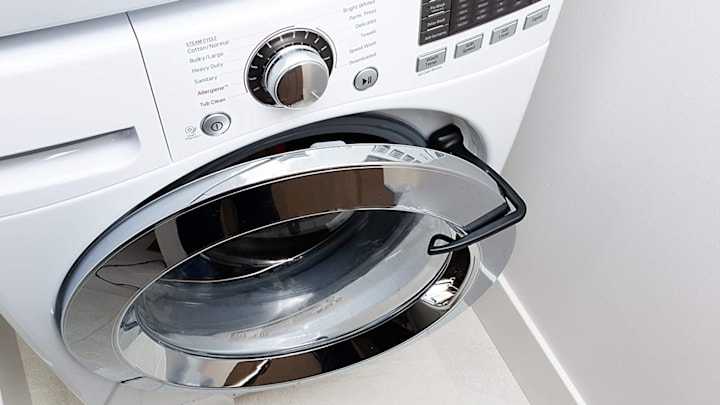Everyone loves a fresh laundry scent, but no one likes a smelly washing machine. Although these appliances are meant to remove dirt and stains, they can be contaminated with pathogenic bacteria, fungi, and viruses found in dirty clothes.
It’s good practice to clean your washing machine at least once a month to prevent it from getting grimy. Here’s how to properly clean front-loading and top-loading washing machines.
How to Clean a Top-Loading Washing Machine
Top-loading machines come in two models: traditional and high-efficiency, or hybrid. The former has an agitator in the middle of the drum, while the latter has a disc-shaped structure at the bottom called an impeller.
A vinegar-based spray is an affordable cleaning option for both types of machines, and it’s also easy to make. Simply mix a one-to-one ratio of distilled white vinegar and water in a spray bottle. You can use a vinegar mixture or an all-purpose cleaner to wipe the inside of the washing machine and the seals around the door. Remember to also remove debris from the filters or drains around the seal and fabric dispensers.
The agitator in traditional washing machines is detachable, so you can take it apart and soak it in hot water, vinegar, and baking soda. You can do the same with the impeller in hybrid models. Usually, a bolt keeps the impeller in place, so it’s best to clean it occasionally.
If you don’t feel like going the DIY route, get washing machine cleaning tablets (OxiClean, Tide, and Affresh are a few popular brands) and follow the package instructions.
How to Clean a Front-Loading Washing Machine
The rubber seal around the doors of front-loading washing machines is a magnet for bacteria. Instructions from Martha Stewart call for bleach and vinegar, but take care to keep them separated. When combined, the chemicals in the liquids react to form gaseous chlorine, which can be fatal when inhaled in high amounts. It’s important to thoroughly clean the vinegar off the appliance before using bleach.
Start by opening the small door near the bottom of the machine to find the drain filter. You’ll need to shake the filter over a trash can and rinse it to clean it properly. When you take the cap off the drain tube, use a bowl or small towel to catch spilled water. Then, remove the rest of the water from the machine using a spin-only cycle.
Like top-loading washing machines, you can opt for a vinegar-based spray by mixing a one-to-one ratio of distilled white vinegar and water in a spray bottle. If you’re using vinegar, spray the solution along the washer’s gasket or rubber door seal. After about a minute, wipe the solution off with a cloth. Ensure the gasket is thoroughly cleaned and completely dried before adding the bleach.
Carefully fill the detergent compartment to the maximum level with liquid chlorine bleach and activate the “self-clean” function if available. If your washer doesn’t have that setting, pick the hottest and longest setting and wipe the tub with a towel when the cycle is over.
Finally, start a rinse and spin cycle to remove any leftover residue, which might take a few rounds. Washing machine cleaning tablets are also an option for front-loading appliances. Also, don’t forget to clean the pump filter.
It’s best to keep lids, doors, and detergent drawers open in all washing machines to let everything dry. The airflow prevents mildew from forming and makes it harder for bacteria to grow. Wiping the seals and cleaning the filters and drains around them more often will also help, and washing items with hot water lessens microbial contamination as well.
Your washing machine probably isn’t the only part of your home you’re forgetting to clean. Here are seven more spots you may often miss.
Read More About Cleaning:
